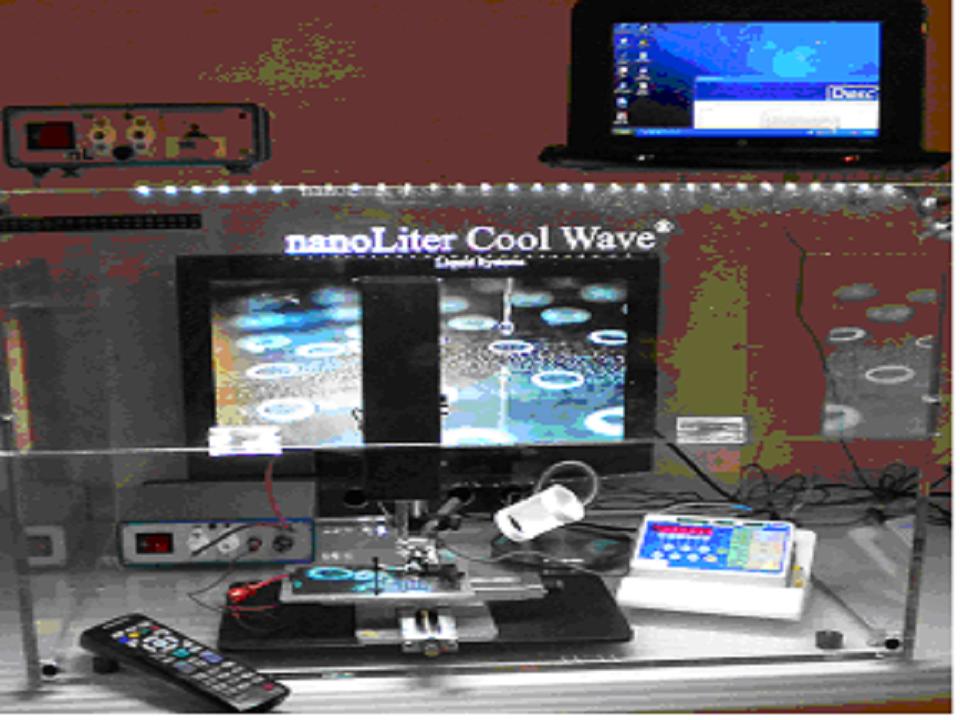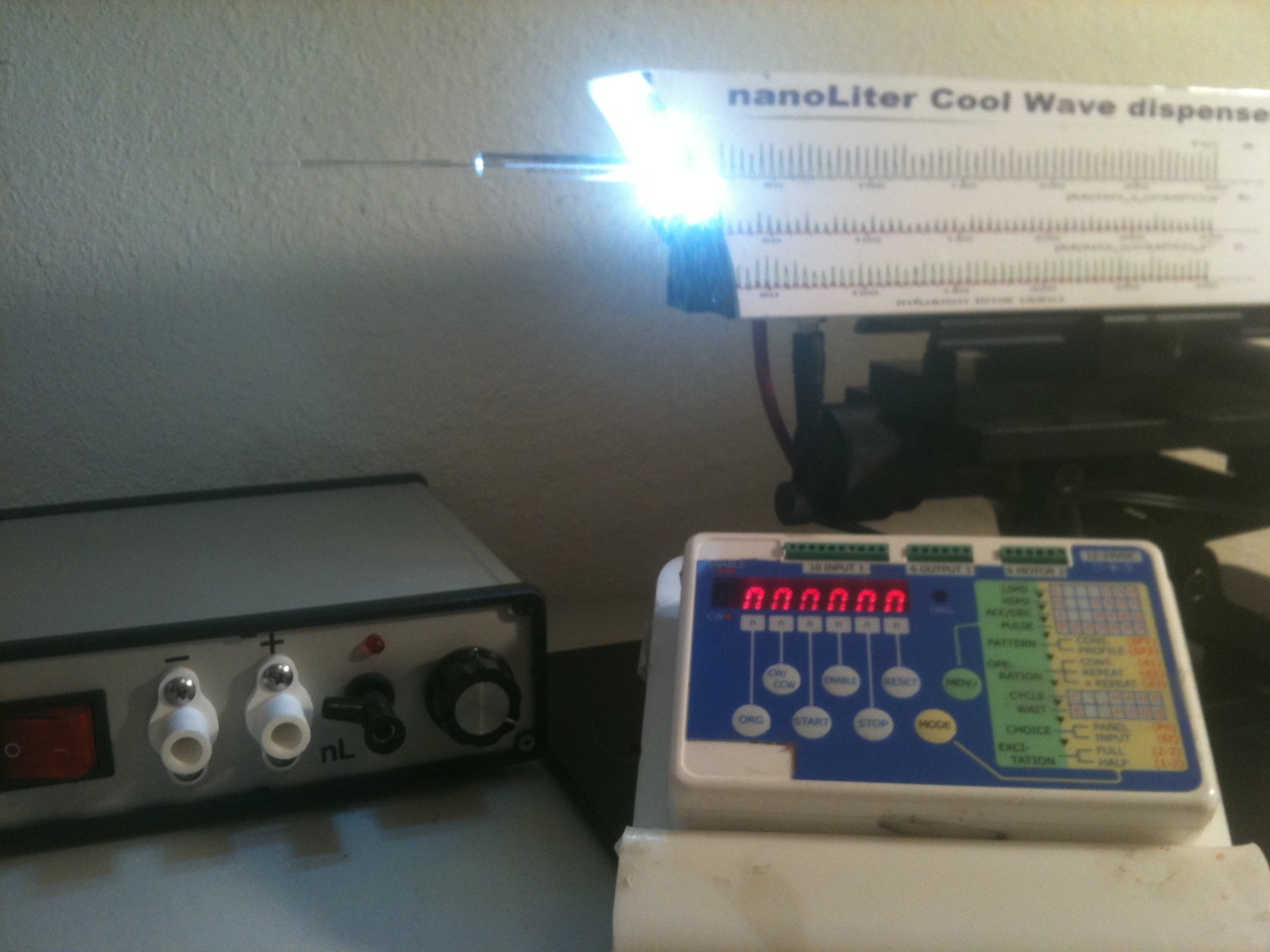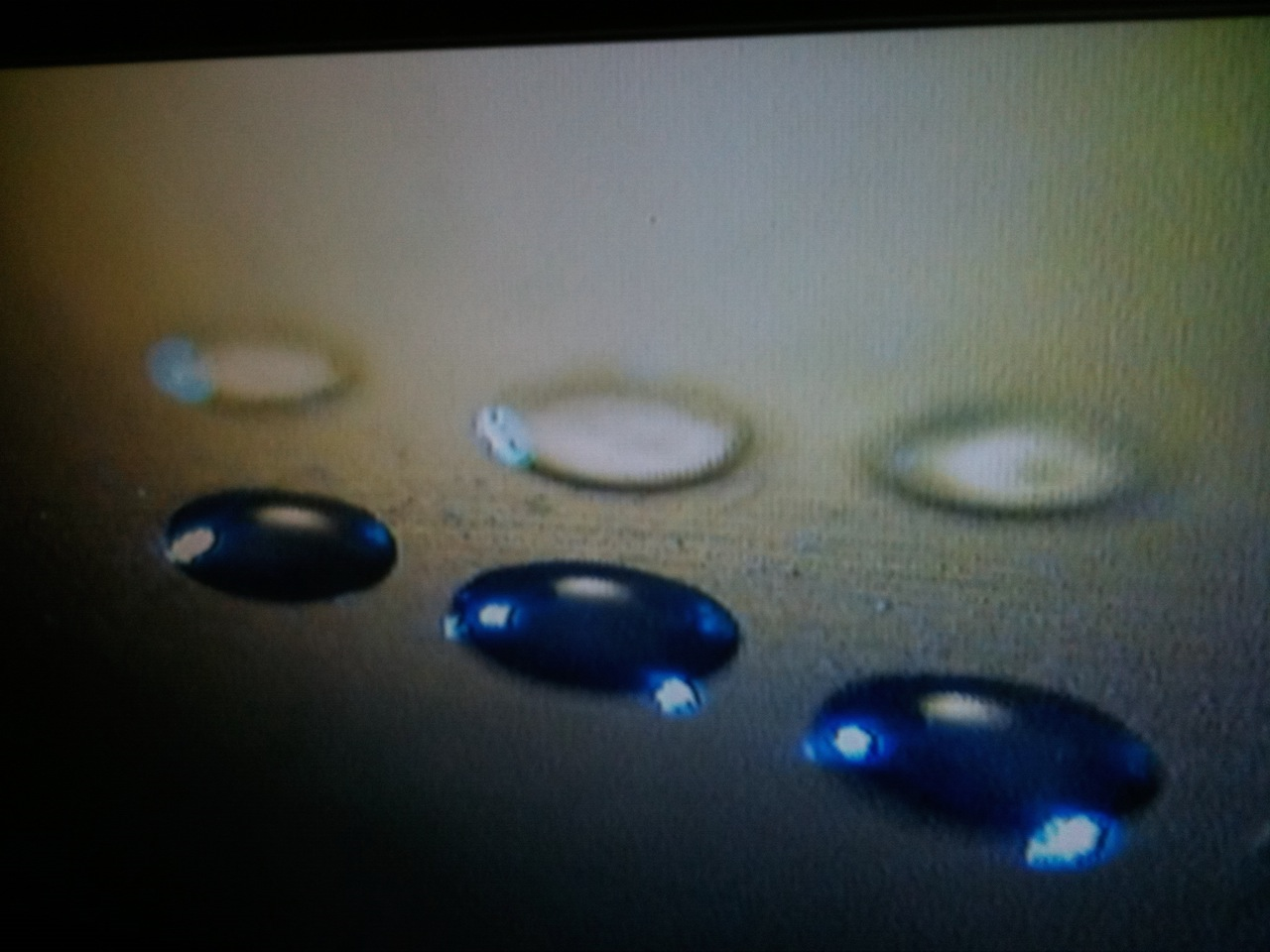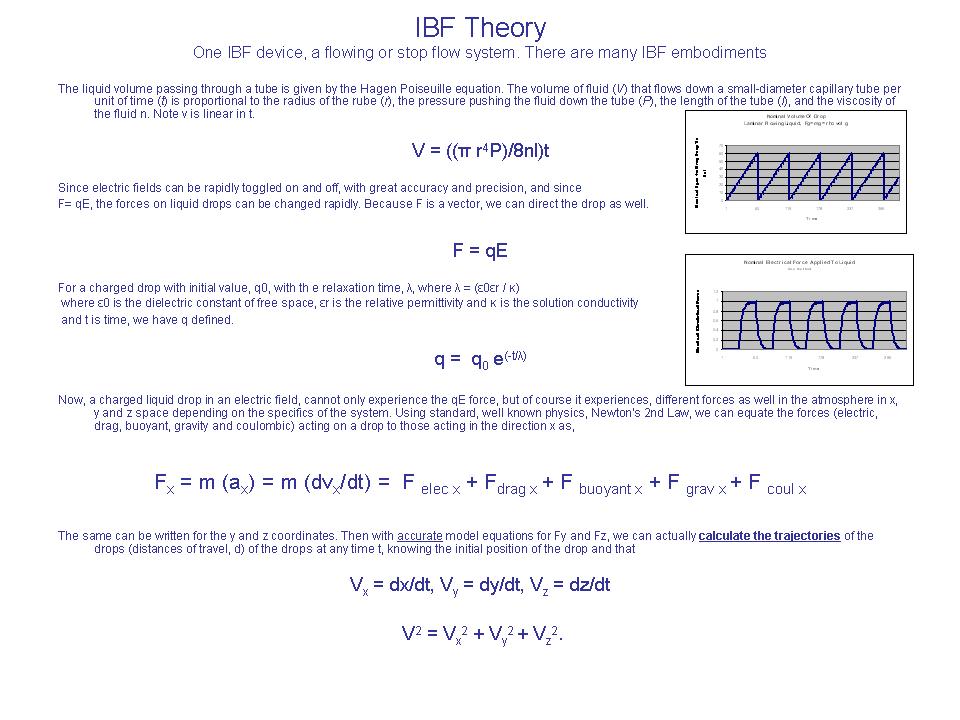 |
Technology
IBF is our patented/pending 100% input efficient, millisecond UPLC or infusion MS sample input technology, the fastest in world, LITERALLY!
SAME IBF technology makes exellent,high sensitivity MALDI, SIMS and LDI crystals!
See 50 nLs fly (not spray!) into a MS and also see a robotic 25 nL LC/MALDI dispense.
See femotogram IBF ToF MS analysis of CMPO a phosphine oxide used to chelate Lanthanide, other metals w/out an ICP!
See a nL droplets fly into a HR ToF in ms. "Methods to concentrate sample spots on targets improve detection." T. Covey et al, JASMS, 2006, 17,1129-1141.




See our many user successes, papers, & 100% "ALL IN", UPLC MS data, a world's first! More articles, toggle down.
Note: For ESI, nLs ->... fLs-> ...+/- fast! and for MALDI, nLs-> excellent crystals fast, too.

Nanoliter devices use IBF to dispense, treat, purify or chromatograph liquids. In IBF, liquids are charged which launches them to targets of all types (e.g., MALDI plates, humans, microscope slides, TLC or microtiter plates, mass spectrometers, optical cells, almost anything). The liquid drops fly, field directed to locales where they can be measured on arrival, like ions in mass spectrometers. IBF is a new, simple way to transport & treat liquids for many purposes.
Through the presentation of the physics of IBF, it has been shown that unlike devices that employ piezoelectric, sound, or other technologies that are applied to transport liquids at low volumes that IBF technology can 1) kinetically project drops to targets of all types, 2) dynamically direct the liquids in flight to targets (a required, trait for small volumes of liquids) and details depending 3) count them on arrival. This simple technology has been called “elegant” by the former Director of R&D at Sciex. America's greatest mass spectrometrist called the technology and our ability to shoot 100% of cell contents, cell liquids and other samples...like water... into MS's, "very exciting."
The nanoliter regime offers a number of obvious benefits over larger volume regimes in the lab and elsewhere. These include significant savings of expensive reagents, major reduction in human exposure to toxic chemicals, allergens, agents, viruses, etc. The nanoliter regime also reduces waste disposal costs. Because IBF has a massive dynamic range (µL to fL), it has a substantial application space. It is a useful laboratory tool that has broad applications elsewhere. For example, IBF can be used for simple sample dilution; the analysis of proteins, peptides and synthetic polymers by MALDI; other sample preparation in chemical analysis; drug delivery; drug discovery; radiochemistry; homeland security/defense applications; forensics; the sampling of or drug delivery to human beings; in medical diagnostics; and in the manufacture of unique chemical and other entities, e.g., polymers and electrets. Finally, IBF also allows non-touch dispensing in the microliter regime as well for more classical assays, and it also has interesting consumer applications, e.g., gluing.

Selected older linked publications and notes on IBF Applications.
06/10: IBF Sample Prep, Presentation to DART, ASMS 2010 poster w/JEOL.
01/09: "Measuring Charge for the Real Time Induction Based
Fluidic MALDI Dispense Event Verification and Nanoliter Volume
Determination."
12/08:
"Electric Field
Enhanced Crystallization for synthetic polymer MALDI-TOF Mass
Spectroscopy via Induction Based Fluidics."
08/08: Improving MALDI Sensitivity
Using Induction Based Fluidics, JASMS August 2008 publication.
02/07: The Nanoliter Syringe,Feb 2007
Is The Dried Droplet Method science?
Induction based fluidic applications
Electric Zip Tips, JALA, 2002, Sauter and Sauter
NanoLiters Onto Media, Am. Lab, Oct 2001, Sauter and Sauter
|
 |
 |
|










